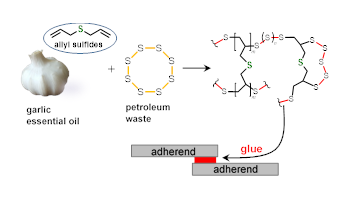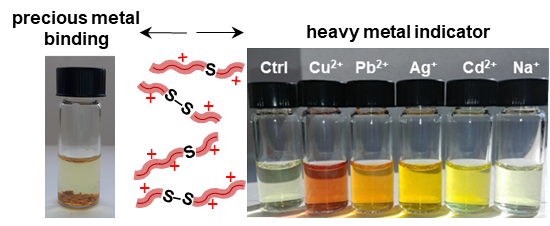
Dr. Courtney "Cori" Jenkins
Associate Professor
Office: PSC 347, Pocatello
208-282-4373
Postdoctoral Studies: Chemical Biology, California Institute of Technology, 2015-2016
Ph.D. Chemistry, Purdue University, 2015
Bachelor of Science Biochemistry, Saint Louis University, 2010
Research area: Sulfur-based Polymer Chemistry
Student experience required for research: CHEM 1111, CHEM 1112
Student experience gained from research: Polymer synthesis and characterization, materials analysis.
Ideal preparation for: Employment in a wide-range of chemical industries, teaching, and preparation for graduate school or professional schools.
Research Focus
Elemental sulfur (S8) is produced in abundance during petroleum refinement, generating millions of tons of waste. The Jenkins group uses a technique called inverse vulcanization to make new polymeric materials from elemental sulfur. Sulfur becomes the backbone and acts as the solvent in this reaction eliminating the need for volatile organic solvents. Natural monomers including those from garlic have been incorporated into these materials further promoting aspects of green chemistry.

In the lab, students examine fundamental aspects of polymer synthesis and characterization. These polysulfides contain dynamic bonds, which offers an opportunity to create modifiable polymer frameworks. These materials have applications in heavy metal remediation and adhesives among others. The ultimate goal in the lab is to utilize petroleum waste products for the development of functional materials.

Students will learn polymer synthesis and a variety of instrumentation techniques including NMR, ATR-IR, UV-Vis spectroscopy, gel permeation chromatography (GPC), and differential scanning calorimetry (DSC) as well as common chemistry software. Additionally, regular group meetings will provide both written and verbal communication skills.
Recent Publications
Sayer, K. B.; Miller, V. L.; Merrill, Z.; Davis, A. E.; Jenkins, C. L. Allyl Sulfides in Garlic Oil Initiate the Formation of Renewable Adhesives. Polymer Chemistry. 2023. 14(26), 3091-3098.
Davis, A. E.; Sayer, K. B.; Jenkins, C. L. A Comparison of Adhesive Polysulfides Initiated by Garlic Essential Oil and Elemental Sulfur to Create Recyclable Adhesives. Polymer Chemistry. Accepted. https://doi.org/10.1039/D2PY00418F
Eder, M. L.; Call, C. B.; Jenkins, C. L. Utilizing Reclaimed Petroleum Waste to Synthesize Water-soluble Polysulfides for Selective Heavy Metal Binding and Detection. ACS Applied Polymer Materials. 2022. 4(2), 1110–1116. https://doi.org/10.1021/acsapm.1c01536.
Orme, Kennalee; Fistrovich, Alessandra H.; Jenkins, C. L. Tailoring Polysulfide Properties through Variations of Inverse Vulcanization.” Macromolecules. 2020. 53, 9353-9361.
Herrera, C.; Ysinga, K. J. ; Jenkins, C. L. “Polysulfides Synthesized from Renewable Garlic Components and Repurposed Sulfur Form Environmentally Friendly Adhesives.” ACS Applied Materials and Interfaces. 2019. 11(38), 35312-35318.

